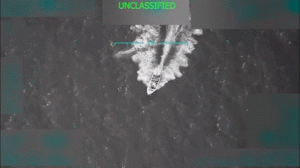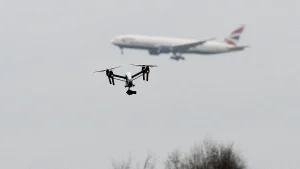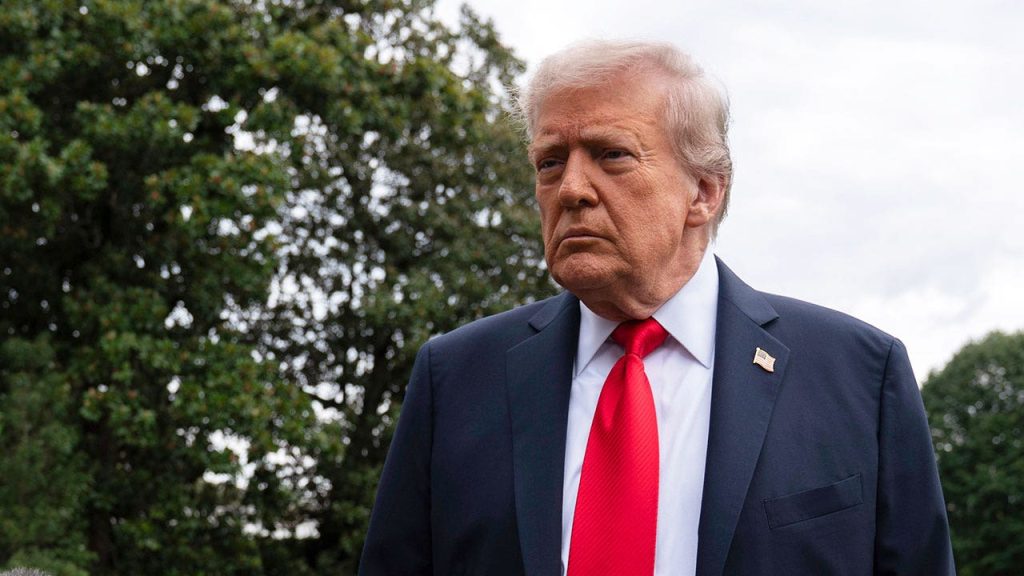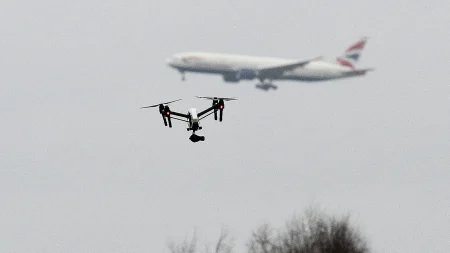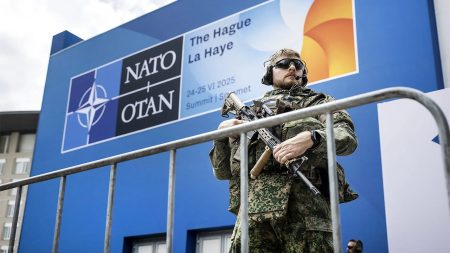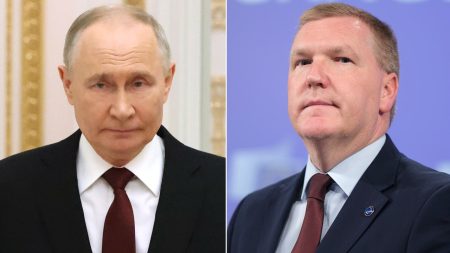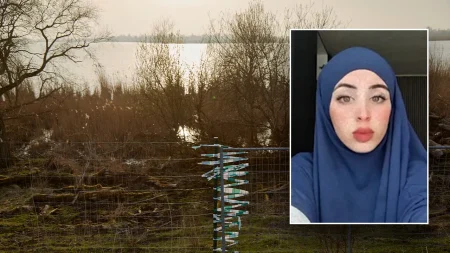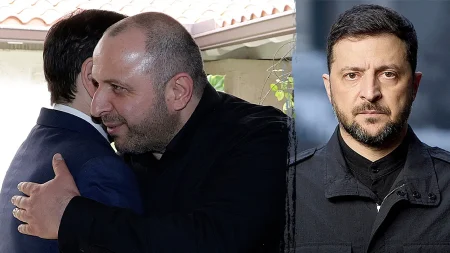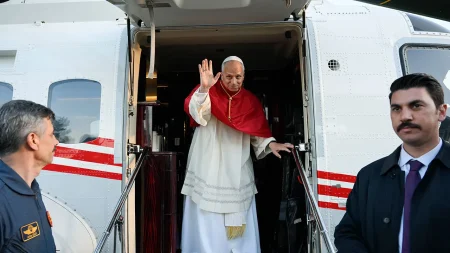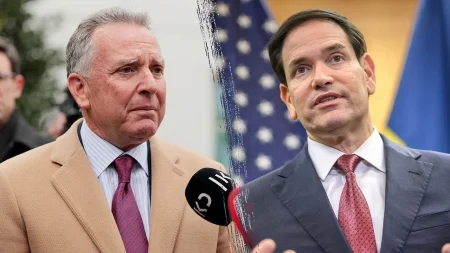Trump Signals Readiness for New Russia Sanctions Following Massive Ukraine Attack
In a recent development in the ongoing Russia-Ukraine conflict, President Donald Trump has indicated his willingness to implement a “second phase” of sanctions against Russia. This statement comes in response to what has been described as Russia’s largest barrage of drone and missile strikes on Ukraine to date. The devastating attack damaged a cabinet building in Kyiv and resulted in multiple casualties, including a mother and her baby. When questioned by reporters about potential additional sanctions, Trump affirmed his readiness to move forward with punitive measures after months of unsuccessful attempts to persuade Russian President Vladimir Putin to cease military operations or engage in direct talks with Ukrainian President Volodymyr Zelenskyy.
Despite the escalation in hostilities, Trump maintains that he intends to speak with Putin “over the next couple of days,” though the specific objectives of this conversation remain unclear. “Look, we’re going to get it done,” Trump told reporters, referring to resolving the Russia-Ukraine situation. He expressed his dissatisfaction with Russia’s Sunday attack, which involved an unprecedented 810 drones and 13 missiles fired across Ukraine. Ukraine’s air defense systems reportedly neutralized 747 drones and four missiles, but the assault still resulted in significant damage and civilian casualties. “I am not thrilled with what’s happening there,” Trump stated. “I believe we’re going to get it settled. But I am not happy with them. I’m not happy with anything having to do with that war.”
The timing of Russia’s massive strike is particularly noteworthy, coming just days after Putin claimed willingness to meet with Zelenskyy—but only if the Ukrainian leader traveled to Moscow. Western and Ukrainian officials have dismissed this proposition as both dangerous for Zelenskyy and lacking any genuine commitment to good-faith negotiations. The conditions Putin has attached to ending the war appear primarily designed to consolidate Russian territorial gains, including freezing front lines in Kharkiv and Zaporizhzhia while demanding Ukrainian withdrawal from Donetsk and Luhansk regions. These terms have been viewed by many as an attempt to formalize Russian control over significant portions of Ukrainian territory rather than a sincere effort to achieve a just peace.
Trump also revealed that European leaders will be visiting Washington D.C. this week to discuss strategies for ending the war, though he did not specify which leaders would be making the trip or whether Zelenskyy would be among them. This diplomatic initiative comes at a critical juncture in the conflict, with both sides seeking to strengthen their positions on the battlefield while simultaneously engaging in sporadic peace rhetoric. The international community remains skeptical of Russia’s commitment to genuine negotiations, particularly given the timing and scale of its recent attacks on Ukrainian civilian infrastructure, which appear designed to maximize suffering as winter approaches.
Meanwhile, Ukrainian forces have reported a significant battlefield development with the recapture of Zarichne, a strategically important town in the Donetsk region. This area holds particular value due to its proximity to Luhansk—a region almost entirely under Russian occupation—and its location near key transport routes connecting strategically important cities in Donetsk. This Ukrainian advance, along with reported progress near Pokrovsk in western Donetsk, represents a challenge to Russia’s summer offensive operations and complicates Putin’s apparent strategy of cementing territorial gains before any serious peace negotiations.
The escalating tensions between Russia and Ukraine, coupled with Trump’s signals regarding additional sanctions, highlight the complex diplomatic and military challenges facing all parties involved in this protracted conflict. As European leaders prepare to convene in Washington and Trump plans his conversation with Putin, the international community watches closely for any signs of a breakthrough that might lead toward a sustainable peace agreement. However, the contradiction between diplomatic overtures and continued military escalation—exemplified by Russia’s massive drone and missile strikes—suggests that achieving a resolution remains a distant prospect. The coming weeks may prove critical in determining whether diplomatic efforts can gain momentum or if the conflict will continue its destructive trajectory with mounting human costs on both sides.
